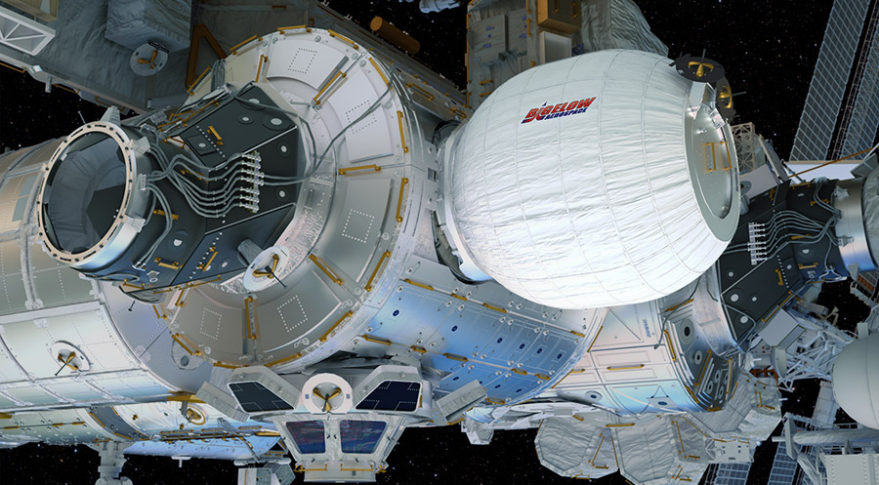NASA Plans to Extend Expandable Module's Stay on Space Station

SYDNEY — NASA plans tokeep an experimental expandable module attached to the International Space Station beyond its original two-year lifetime, the agency announced Oct. 2.
In a procurement filing, NASA said it was planning to issue a sole-source contract to Bigelow Aerospace in the first quarter of fiscal year 2018 for engineering and other services related to extended use of the Bigelow Expandable Activity Module (BEAM). The planned contract, whose value was not disclosed, will cover three years with two additional one-year options.
BEAM was launched to the ISS in April 2016 and, a month and a half later, attached to the station and expanded to its full size. NASA planned to keep BEAM at the station for two years in order to perform engineering tests about the suitability of such expandable, or inflatable, modules for future use on the station or other missions. At the end of the two-year period, NASA planned to jettison BEAM and allow it to destructively reenter the atmosphere. [An Inflatable Space Room: BEAM in Pictures]

The agency expects to use BEAM to store more than 100 Cargo Transfer Bags, a standard unit of cargo storage on the station that measures about half a cubic meter. That will free up the equivalent of about four payload racks in other modules of the station for research. NASA will also continue to study the module's effectiveness for radiation and debris shielding.
There are no plans, though, to use BEAM as a habitation module. Astronauts do regularly enter the module — 13 times since its installation on the station in 2016 — to take readings and collect samples.
The new contract with overlap with the existing contract for BEAM's original two-year mission. "At the end of the new contract, the agency may consider further life extension or could again consider jettisoning BEAM from the station," NASA said in a statement about its long-term plans for BEAM.
BEAM is a prototype of larger expandable modules under development by North Las Vegas, Nevada-based Bigelow Aerospace. Company officials have previously said they plan to have their first two B330 modules — so named because each has a volume of 330 cubic meters when expanded — ready for launch in 2020.
Get the Space.com Newsletter
Breaking space news, the latest updates on rocket launches, skywatching events and more!
While Bigelow's long-term plans call for the development of commercial space stations using those modules, a B330 could be added to the ISS, possibly to the same docking port currently occupied by BEAM. NASA has proposed that port to commercial module developers, although it has not yet released a plan for allocating that port to companies.
Other companies that have expressed an interest in developing a commercial module for the ISS include Axiom Space and Ixion, a joint effort of NanoRacks, Space Systems Loral and United Launch Alliance.
This story was provided by SpaceNews, dedicated to covering all aspects of the space industry.
Join our Space Forums to keep talking space on the latest missions, night sky and more! And if you have a news tip, correction or comment, let us know at: community@space.com.

Jeff Foust is a Senior Staff Writer at SpaceNews, a space industry news magazine and website, where he writes about space policy, commercial spaceflight and other aerospace industry topics. Jeff has a Ph.D. in planetary sciences from the Massachusetts Institute of Technology and earned a bachelor's degree in geophysics and planetary science from the California Institute of Technology. You can see Jeff's latest projects by following him on Twitter.










